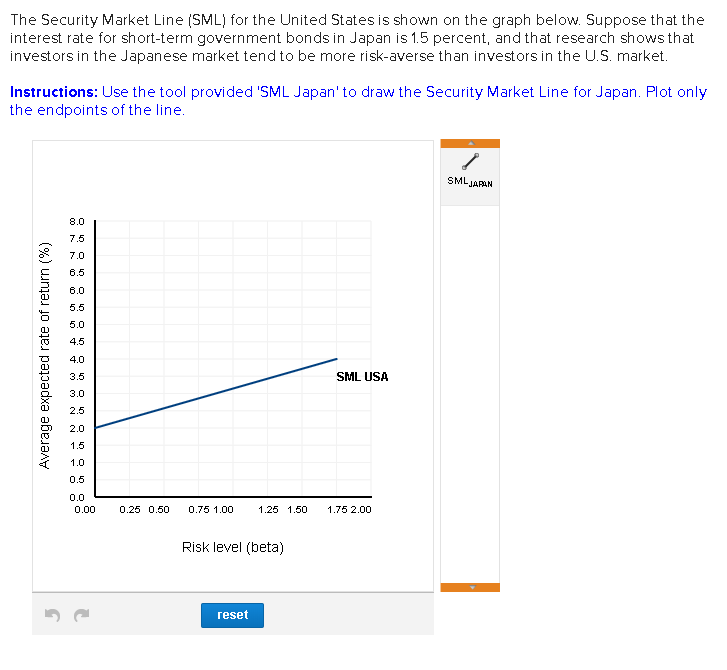
CAPM is represented on a graph by the Security Market Line (SML). The Capital Asset Pricing Model (CAPM) provides a linear relationship between expected return for an asset and the beta. A portfolio is a convex combination of the individual securities and hence I can imagine that a line that plots individual securities on a standard deviation-expected return plane will also. I understand the first two sentences. So efficient portfolios plot on both CML and SML, although inefficient portfolios plot on the SML but below CML.
This assumption means that all securities are valued correctly and that their returns will plot on to the SML. Difference between the fair (equilibrium) and the actual expected rate of return on a stock. As opposed to the Capital Market Line (CML), where the X-axis was standard deviation.Security Market Line (SML) graphical representation of the expected return-beta relationship of the CAPM-on-below-above-'fairly priced' assets plot on the SML-overpriced assets plot the SML-underpriced assets plot the SML.
In an efficient market in equilibrium, you would not expect any assets to plot off the SML because, in equilibrium, all stocks should provide holding period returns that are equal to their required rates of return.As with many financial models, not all the complexities of the financial markets are accounted for. This position relative to the SML implies that your estimated rate of return is below what you should require based on the asset’s systematic risk. CAPM Assumptionsoverpriced.
Markets are frictionless, devoid of transaction costs and taxesIn addition to assuming no transaction costs, the model also assumes thet investors can borrow and lend at a risk-free rate. However, this behavior does not affect the model outcome. The rationality of investors has been critisized because personal bias can result in irrational decision-making. Investors are assumed to be rational if they correctly evaluate all available information to arrive at rational decisions. For more financial risk videos.This assumption does not require all investors to have the same degree of risk-aversion it instead requires investors to be risk-averse as opposed to risk-neutral or risk-seeking.
A single-period assumption has shortcomings. Investors plan for the same, single holding periodThe assumption of a single holding period is convenient since multi-period models become very difficult. It is noteworthy that the prices do not affect the CAPM conclusions. In spite of this, costs and restrictions on short-selling can introduce an upward bias on asset prices. The practical inability to borrow or lend at a risk does not materially affect the CAPM results.
Investors are price takersIf investors are price takers, it means no investor can single-handedly influence prices by their trades. It is deemed convenient from a modeling perspective considering that it allows for continuous rather than discrete jump functions. All investments are infinitely divisibleThis is the assumption that investors can hold fractions of assets. This assumption can be relaxed as long as the generated optimal risky portfolios are not significantly different. This then means that all asset valuations are identical and the same optimal portfolio of risky assets is generated – the market portfolio. Investors have homogenous expectations or beliefsThis is the assumption that all investors analyze securities in the same way using the same probability distributions and inputs for future cash flows.




 0 kommentar(er)
0 kommentar(er)
